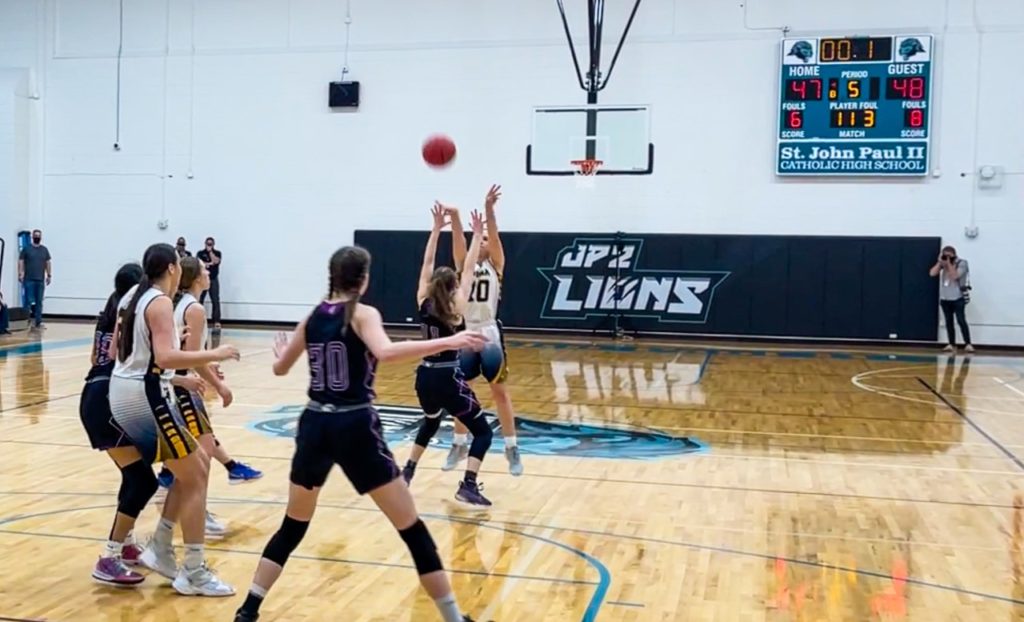Last weekend, we witnessed the tragic final split second of an otherwise flawless season as the Sedona Red Rock High School Girls Basketball Team, with a one-point lead, lost the 2A championship game in Phoenix with a buzzer-beating three-point shot by their competitor, Pima High School.
The Arizona Interscholastic Association — known by its acronym AIA or to coaches and school administrators as the “[expletive] AIA” — is a nongovernmental association of public school sports programs who have voluntarily joined the monopoly to compete against each other. The executive board is a mixture of school district superintendents and athletic directors from around the state facing little to no oversight by the general public.
While the SRRHS girls team’s loss can be attributed to an opponent’s one-in-a-thousand lucky shot at the last second, the AIA’s failures are a comedy of errors that spanned the 2020-21 school year and tend to follow the monopolistic association year after year after year. To wit:
■ Schools, students, parents and teachers need to plan their sports teams’ activities on a schedule. In the fall, the AIA was non-committal with its fall sports. While AIA released a broad schedule in August, Arizona teams were not given their actual schedules until just before it began, so schools scheduling buses, parents deciding whether to take an afternoon off to watch their kids’ games locally or drive halfway across the state had to scramble at the last minute.
The official competition began on Sept. 24, leaving little time to make arrangements, especially in districts with limited buses.
■ Rather than make decisions based on state health data from the Arizona Department of Health Services, getting waivers or official endorsements from the Arizona Governor’s Office and guidance from the Arizona Department of Education, the AIA asked coaches for input on how fall sports could take place. That would entail getting input from coaches from 264 districts, some of whom had widely different ideas about safety protocols.
If an organization is legally tasked with decision-making, then make decisions. If decisions are going to be made by a committee of the whole, abolish the middleman AIA.
■ The AIA had wildly different rules for sports that either contradicted health guidelines or just plain contradicted themselves. The AIA let fall sports go into playoffs, including full contact sports like football with full stands, despite being in the midst of a COVID-19 spike in late November and early December.
If that’s how the AIA wanted to handle sports, cool, but then, roughly a month later, as cases were still high but falling, AIA canceled the winter sports season.
■ Speaking of that, the AIA voted to cancel the winter sports season on a Friday afternoon in January. AIA did not send out a mass email to the media letting us know cancellation was on the table. In contrast, the media has been given notice on every executive board meeting that’s happened before and since. Hiding the meeting didn’t erase the effect — parents, students and the media were going to figure out the season was canceled, um, somehow — but hiding the meeting was cowardly.
■ But wait, there’s more. The AIA reversed the cancellation four days later, not because COVID-19 cases suddenly fell, but due to overwhelming public backlash statewide. Flexibility is a virtue; indecisiveness is a vice.

■ Leading up to the state semifinals and finals, AIA let media know we could cover games but were second-class citizens behind the AIA and its paying affiliates.
Sedona and Pima drove hours to the game, so fans mostly watched a live stream, but AIA’s crowd and media coverage limitations meant it was the only organization with a live feed. The AIA’s official stream was roughly a full second ahead of the official clock — a problem another media outlet would have corrected.
Thus, in the Sedona-Pima match up, the AIA live stream showed that the buzzer-beating shot was late and shouldn’t have counted — causing a lot of confusion both here in Sedona and Pima in Graham County. Yet photos and video from fans on site clearly showed that the shot was clean, out of the shooter’s hands with 0.1 seconds remaining.
If the AIA monopoly is going to flex its muscles to cower actual media outlets, it shouldn’t aim to fail.
Spring sports are coming soon, and we can hope that a weakening pandemic will diminish the AIA’s screwups back to the traditional low-level norms we’ve all come to comfortably loathe.
Christopher Fox Graham
Managing Editor